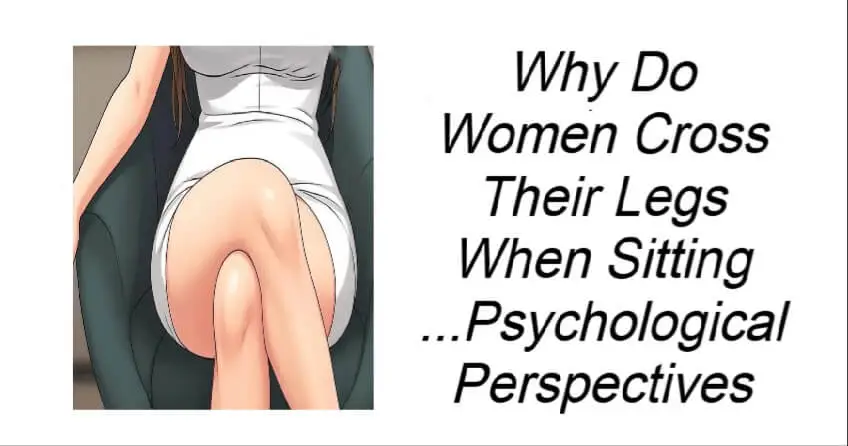Why Do Women Cross Their Legs When Sitting …Psychological Perspectives
The seemingly simple gesture of crossing one’s legs while sitting carries far more weight than it appears. Though often considered a personal habit or matter of comfort, this behavior is deeply rooted in cultural norms, social expectations, and psychological interpretations — particularly for women.
Cultural and Social Context: A Gesture Shaped by History
Throughout history, the way women sit and carry themselves has been subject to scrutiny and regulation. In many Western cultures, particularly in 18th-century Europe, crossing one’s legs was seen as a sign of modesty and refinement, reflecting broader ideals of femininity. Art, literature, and etiquette guides of the time reinforced a posture that was demure, controlled, and socially appropriate.
In contrast, in many Eastern cultures, crossing one’s legs — especially in formal settings — may be interpreted as disrespectful or too casual, highlighting the importance of context and cultural variation in interpreting body language.
Today, the gesture still carries subtle messages. Women may unconsciously cross their legs as a learned behavior — a socialized posture of grace, restraint, or decorum. Fashion, media, and traditional etiquette continue to shape these habits, reinforcing certain expectations around how women present themselves in public spaces. However, such norms may also limit comfort, freedom of movement, and even self-expression.
Psychological Interpretations: More Than a Gesture
From a psychological perspective, leg crossing can signal a range of emotional states or personality traits. For some, it may reflect confidence, control, and comfort in a given space. For others, especially in unfamiliar or social situations, it may act as a form of self-protection, creating a symbolic barrier that conveys vulnerability, anxiety, or shyness.
Psychoanalytic theories have long linked posture with internal emotional states. A tightly closed leg cross might suggest insecurity, while a looser, more open posture may imply openness and self-assurance. Behavioral psychology views such gestures as nonverbal cues — part of the body’s subtle yet powerful language of communication.
It’s important to note that the social conditioning behind this posture often reflects traditional gender norms, with women more likely to be socialized into crossing their legs than men. This behavior, while often subconscious, may still be influenced by the desire to conform to expectations around femininity and poise.
Nonverbal Communication and Social Interaction
In both social and professional settings, leg crossing plays a significant role in nonverbal communication. The direction and openness of the posture can convey levels of interest, engagement, or defensiveness. For instance:
- Crossing legs toward someone can indicate interest or alignment.
- Crossing away may be interpreted as withdrawal or disinterest.
- A relaxed, uncrossed posture can signal openness and confidence.
Studies in social psychology confirm that body language — especially leg position — influences how individuals are perceived during conversations or meetings. For women, this is especially impactful: their posture can affect how their authority, credibility, and approachability are judged.
Consequences for Social Perception and Gender Norms
Despite being a common and often unconscious habit, the act of crossing one’s legs can feed into gendered stereotypes. It is frequently associated with qualities like elegance, fragility, or restraint — traits traditionally ascribed to femininity. These associations can subtly influence how women are perceived, particularly in the workplace.
For example, a woman seated with a more assertive, open posture may be seen as more confident and authoritative than one who maintains a closed, crossed-leg position. These perceptions matter — they shape hiring decisions, leadership potential assessments, and everyday interpersonal dynamics.
As society moves toward greater gender equity, it becomes increasingly important to challenge outdated norms around body language. Women should feel free to adopt postures that reflect comfort and authenticity rather than conform to limiting expectations.
Final Thoughts: A Small Gesture, A Larger Conversation
Crossing one’s legs may appear to be a minor gesture, but it reveals the interplay between culture, psychology, and social perception. It underscores how body language—especially for women—can still be a reflection of social pressures, whether subtle or overt.
Recognizing these dynamics is a step toward deconstructing stereotypes and promoting a culture where women can occupy space — literally and metaphorically — on their own terms. What begins as a conversation about posture becomes an opportunity to rethink freedom, comfort, and expression in public and professional life.
You’ve just read, Why Do Women Cross Their Legs When Sitting. Why not read Manager Had To Hire A New Employee.

